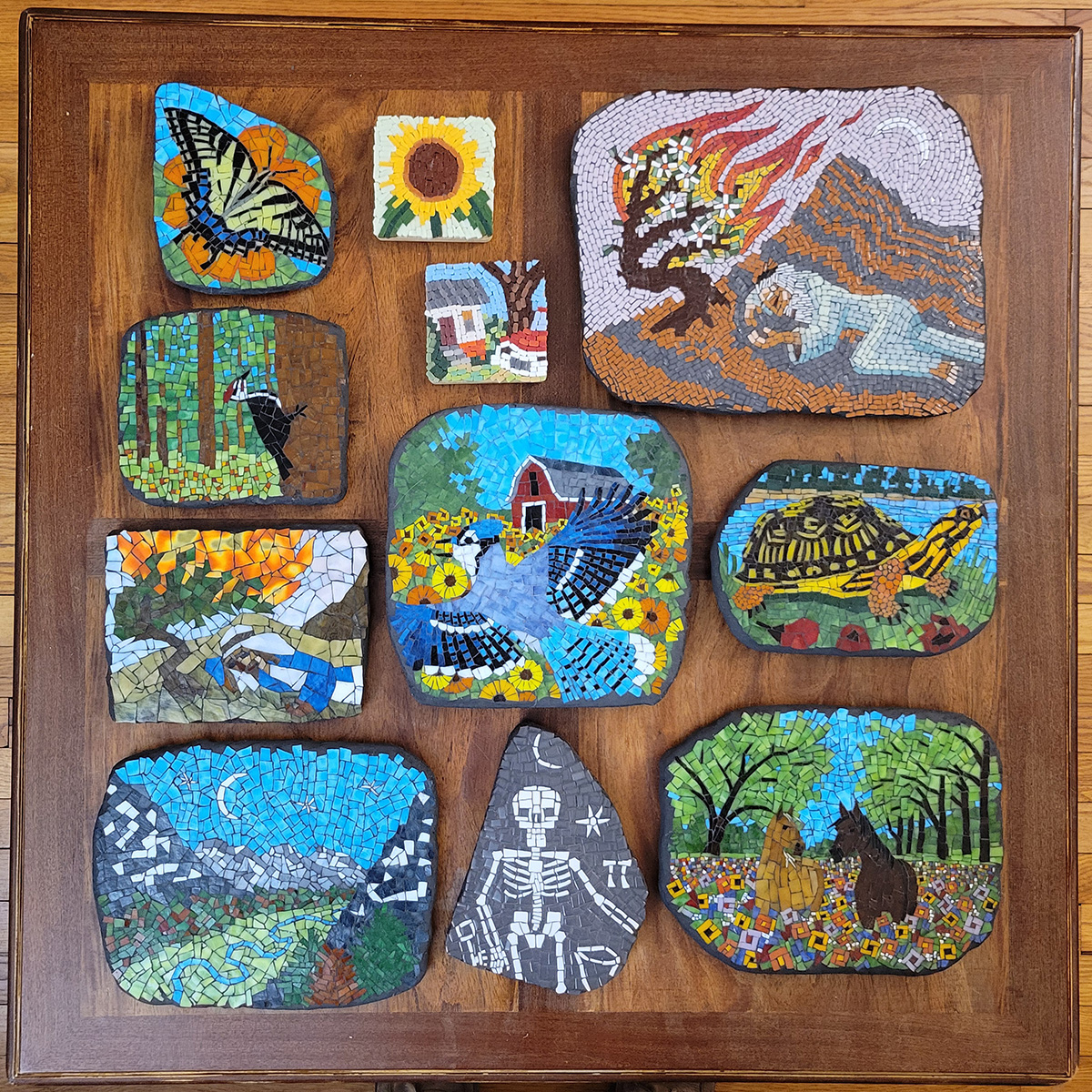Tag: sculptural mosaic
-
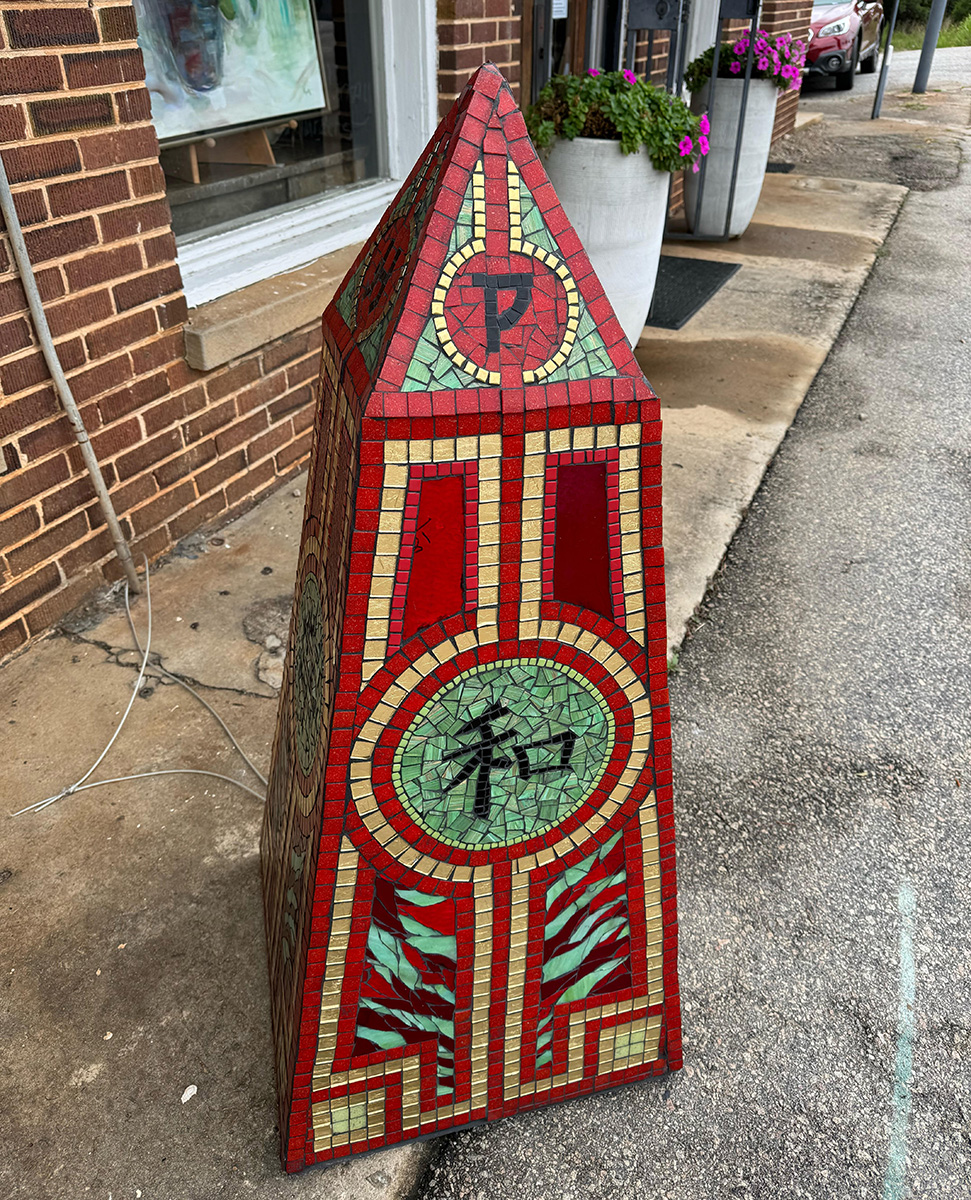
Mosaic Obelisk Garden Sculpture
Lyn Richards has been making a series of mosaic obelisks for installation as garden sculptures, each with a completely different design. Like her Irises mosaic birdbath, Lyn’s garden obelisks are tightly executed.
-
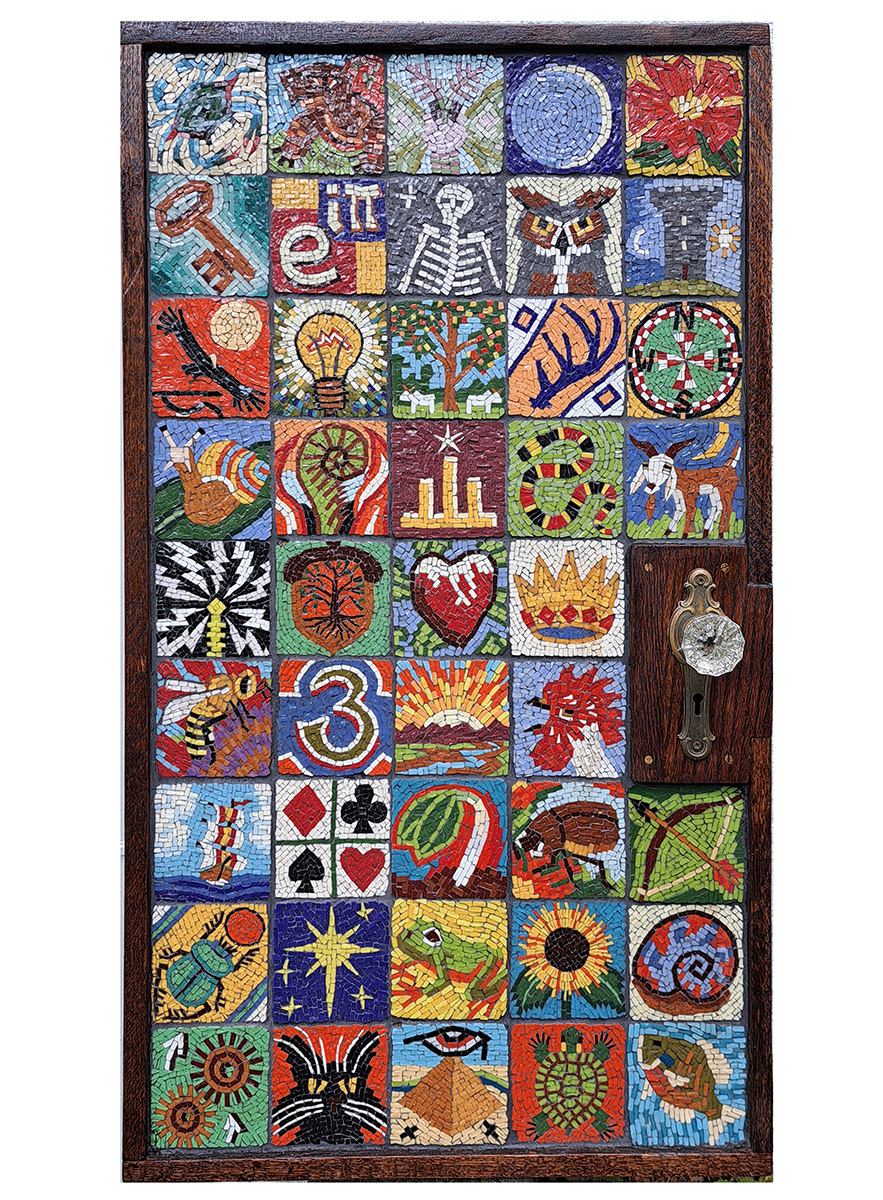
Vinegar Cleaning Grout Haze and Pit Stains
Glass mosaic tile, particularly vitreous glass tiles have sometimes have a few tiny pits in their surface, and these tiny pits can get stained with grout. Fortunately the pit staining can be prevented by applying a product called grout release before grouting, which is what installers use for large architectural tiling jobs. You can also…
-
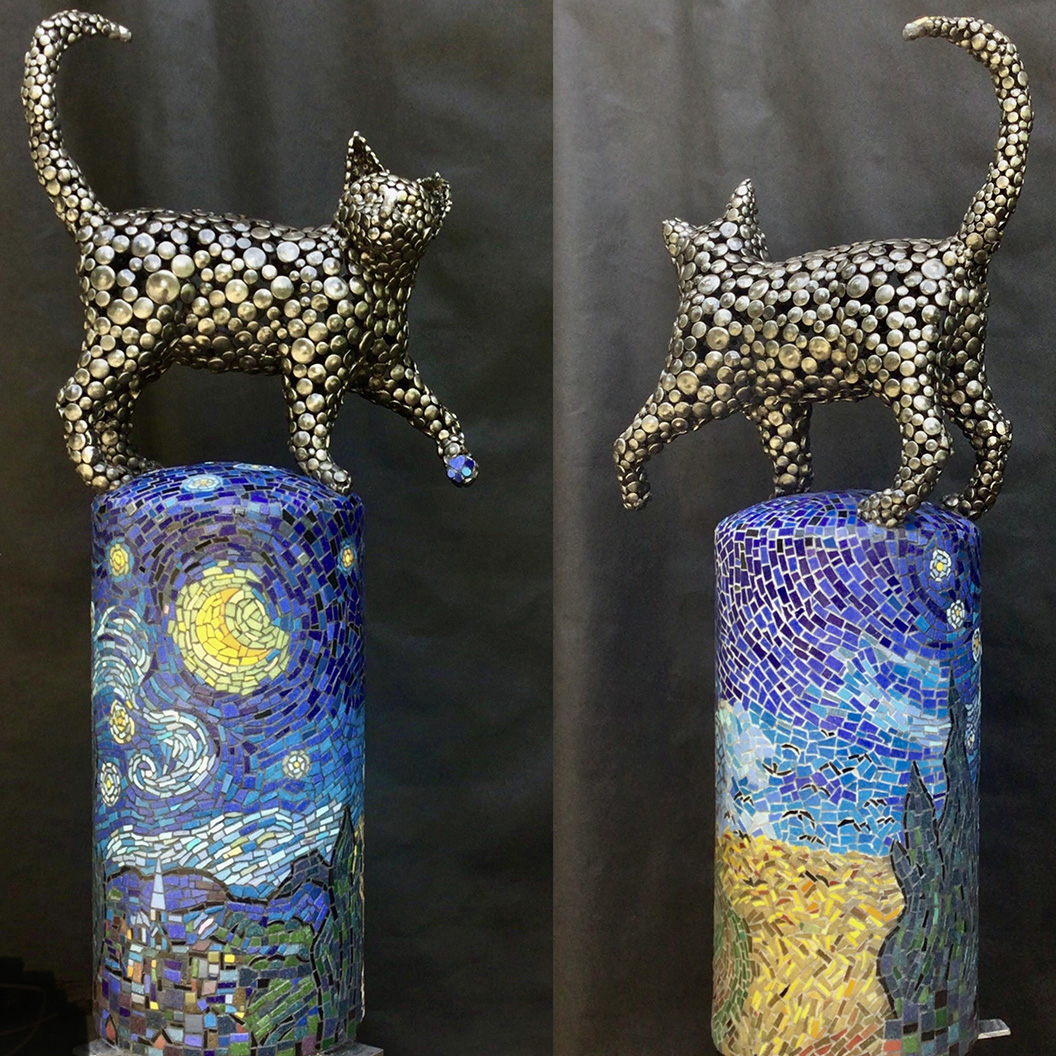
Van Gogh’s Cat Mixed-Media Mosaic Sculpture
Artist Peter Vogelaar has been at it again, and this time he has managed to surprise me. His recent mixed-media mosaic sculpture Van Gogh’s Cat has a plinth that steals the show in my opinion. The plinth on which the cat is standing is a mosaic-covered cylinder that seamlessly combines Van Gogh’s Starry Night and…
-
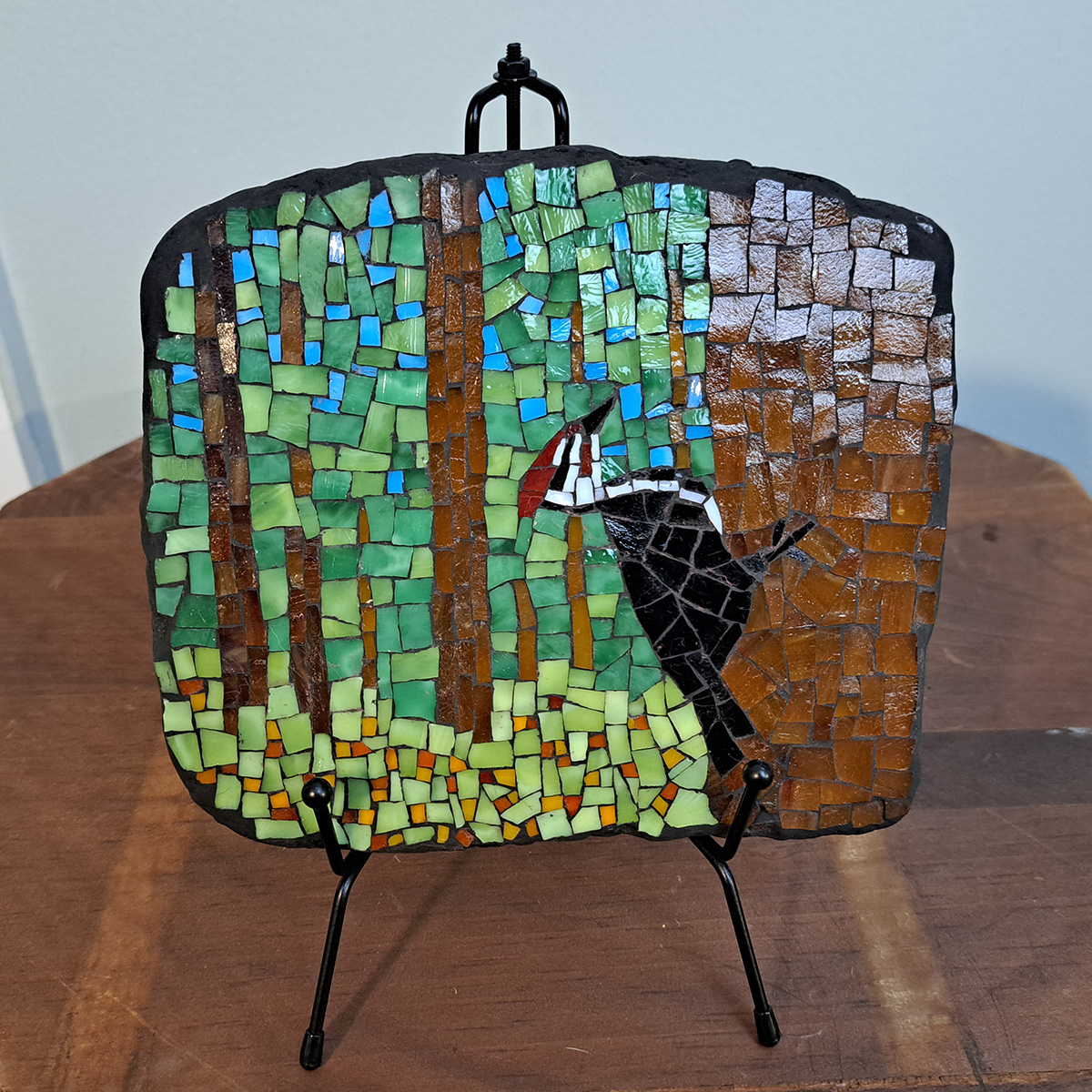
Fundamentals of Mosaic Composition
I recently completed a mosaic titled Woodpecker Forest, which shows a pileated woodpecker on the side of a pine tree in a forest carpeted with capensis flowers. I think this composition is a good teaching example because it demonstrates several fundamentals of visual art. There is strong value contrast (light-dark) contrast in both the figure…
-
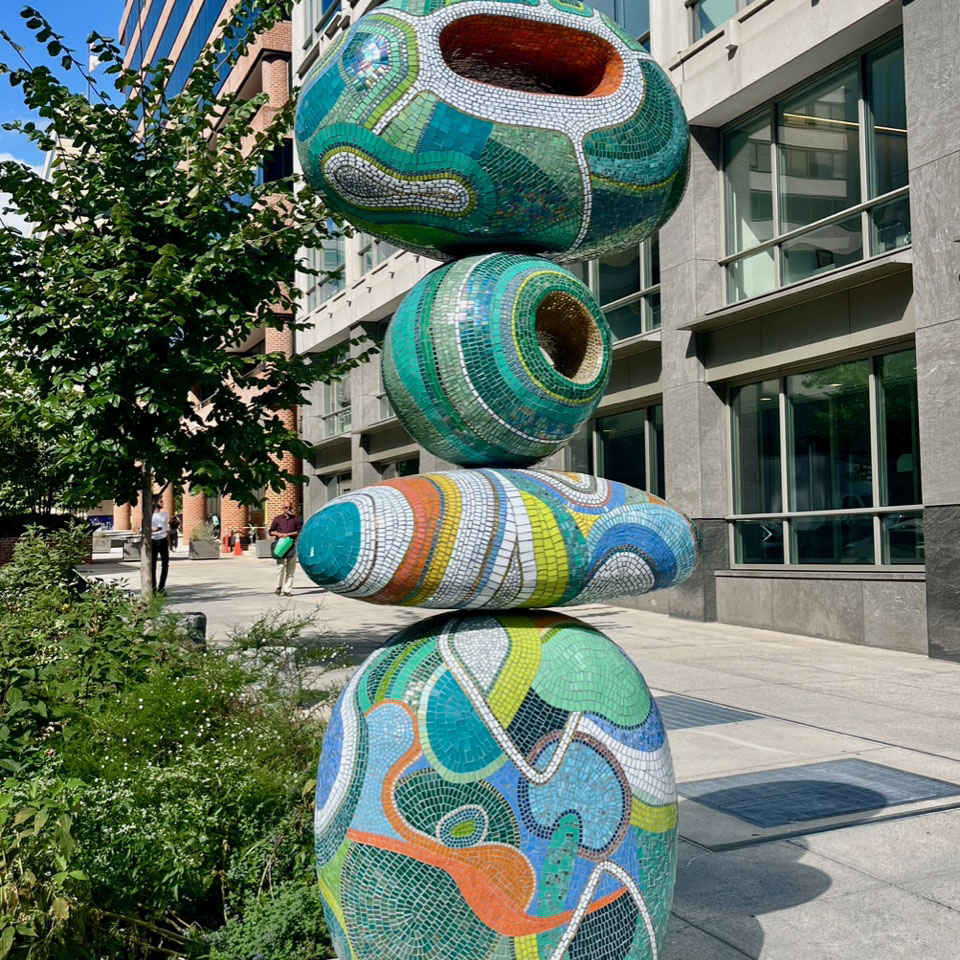
Monumental Mosaic Sculpture
Artist Valerie Theberge recently installed an outdoor mosaic sculpture in Washington, DC, and like much of her work, the sculpture is monumental in scale. I recommend taking a look at Valerie’s website or Instagram, especially if you are planning a large mosaic mural or sculpture.
-
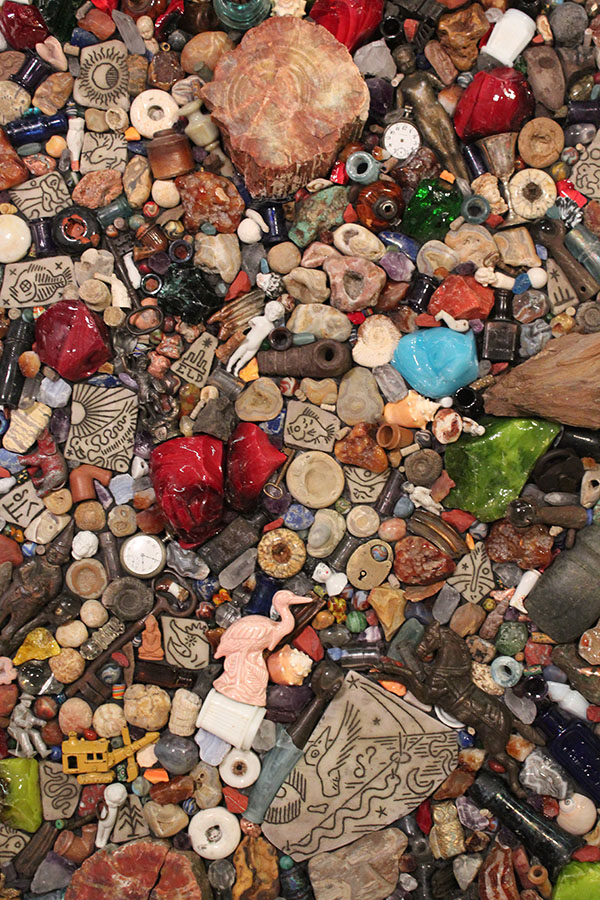
Nested Found-Object Mosaic Art
I sometimes make found-object sculptures and surfaces with many different types of objects but without conventional tile or with conventional tile used only for a particular element. All of these found objects are made from durable materials such as glass, porcelain, and hard varieties of stones If the mosaic is indoors, I will also make…
-
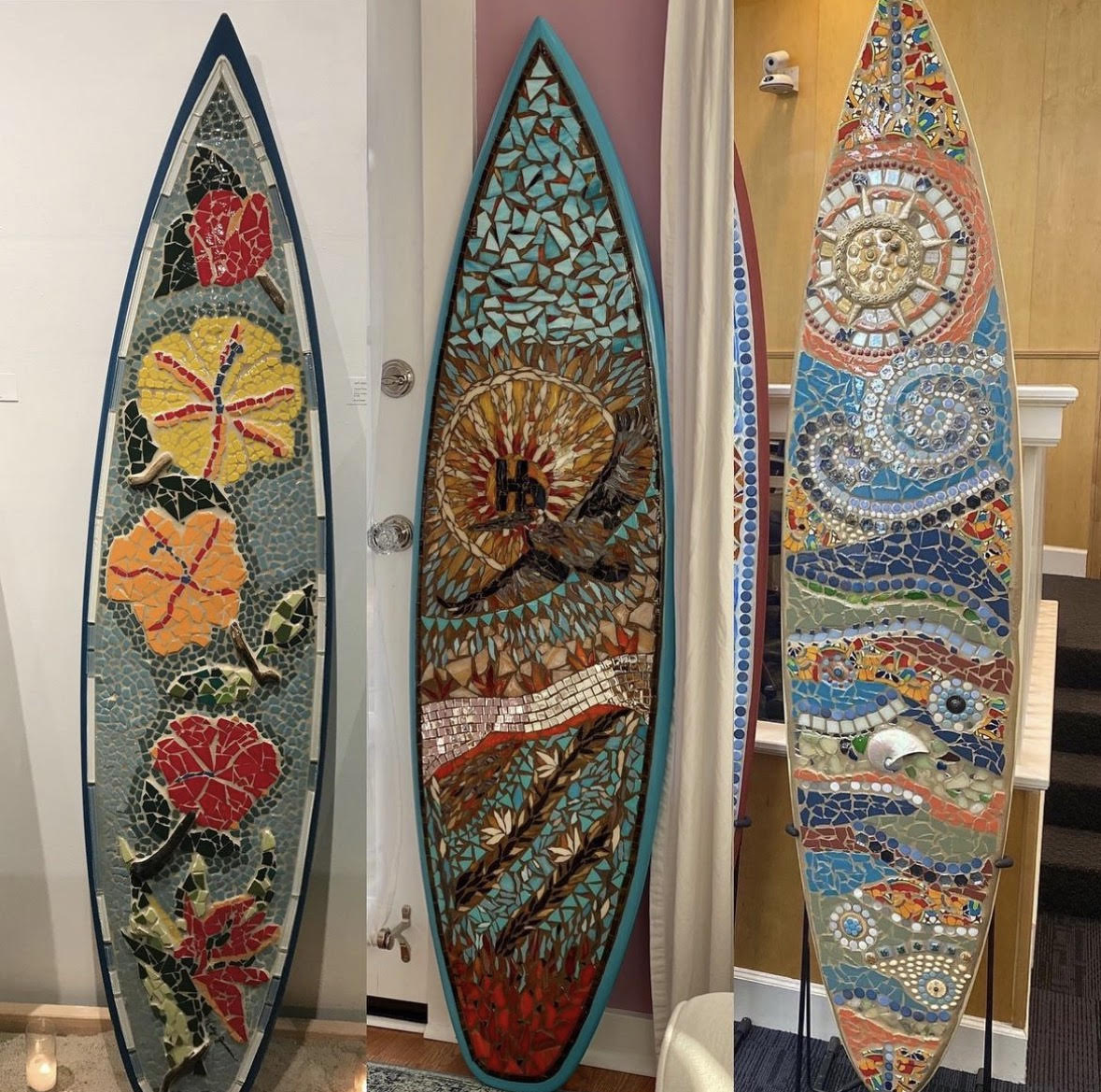
Mosaic Surfboards
Hermosa Beach artist Katy Jenssen makes mosaic surfboards, and for her, it is a logical choice of sculpture base. Katy’s family history and ethos are grounded in the local community, a premier beach town and surf destination, part of an area where a lot of Americana was born. Katy’s compositions fit the shape of the…
-
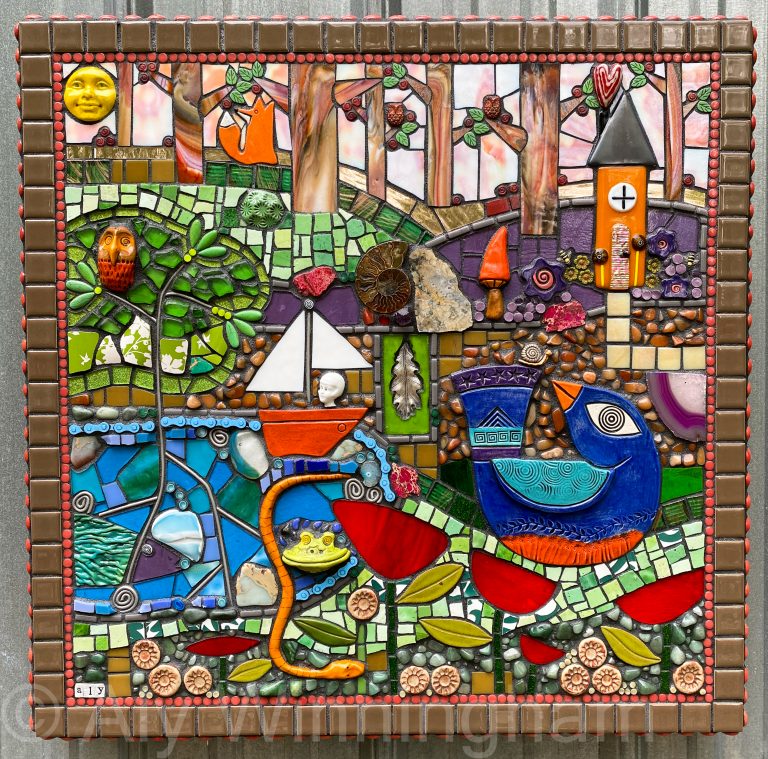
Mixed-Media Mosaic with Ceramic Relief Sculpture
Artist Aly Winningham of Terra Firma Studios has some great mixed-media mosaic artwork. These wall-relief mosaics are a balanced mix of custom ceramic sculptural elements, found objects, and elements of conventional tesserae. I love mixed-media mosaic, and I love to make it myself, but the problem is that you have to spend time at yard…
-
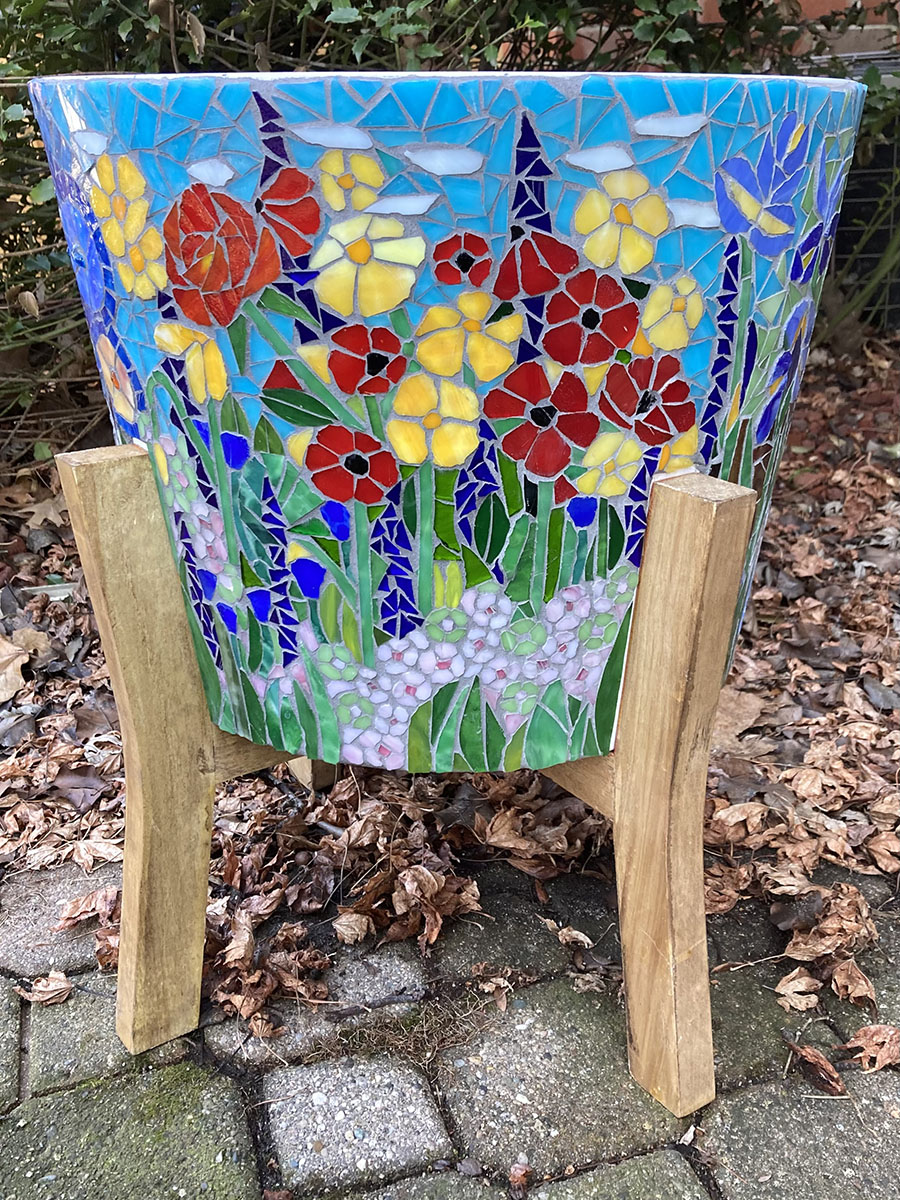
Mosaic Planter Grouted in Sections
Artist Donna Stern recently completed a round mosaic planter, which she grouted in sections. I wanted to share that work for several reasons, and not merely because it is solid work with an emphasis on primary colors with a good balance of warm and cool colors. There are several discussion points:
-
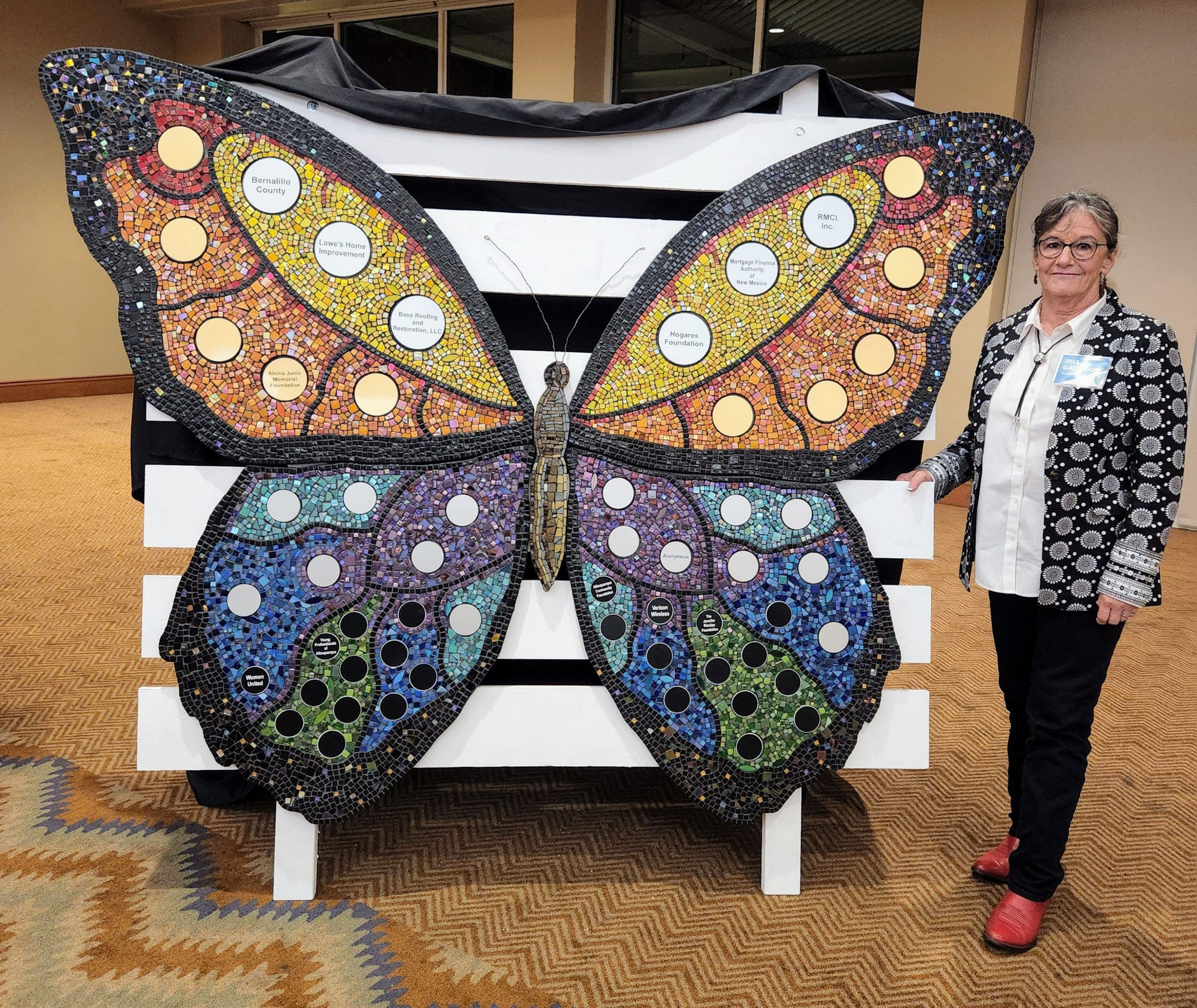
Amazing Commission
I have survived the stress of managing the supply business during the pandemic/supply crisis so far only by allowing myself periods when I get very slack in responding to non-crisis emails. I tell myself I will get back to them eventually, but sometimes eventually is a long time. Most emails that can be ignored for…
-
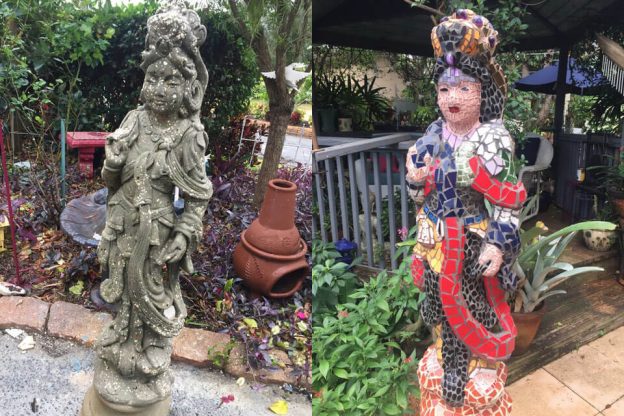
Mosaic Lawn Sculptures by Bernie Taylor
Recently artist Bernie Taylor emailed me some pictures of his mosaic lawn sculptures including some concrete bird baths and benches, and he has an impressive body of work. Bernie’s work is also a great example of how you can buy factory-made concrete sculptures and make them unique works of art by covering them with mosaic.…

